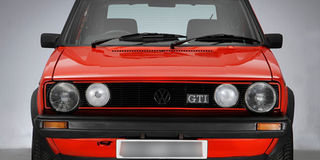GTR, GTI: What do these letters really mean?

What you need to know:
Badges are often more aspirational than actual. So, to know more about a car you want to buy, look at independent car reviews more than what is promised by the letters on the back.
There are more than 600 options in the listings of car brand names (only) and they average more than 10 models each (over time). And these days, each model has, say, 10 variants.
It is a mysterious subject because there are no fixed rules nor common formulae for naming car models; some get their names by chance, or tradition, or word-sound, or looks, or technical logic, or by mistake. In the factory, they have a simple and usually dull code number (a filing reference).
For example, S-195 tells insiders everything and outsiders nothing. And you will never see it on a badge. By the time the car reaches the showroom, the marketing team has tampered with it to create an “image” or to convey information the public will relate to. S-195 becomes a Celica Twincam Turbo 4WD. It tells you a lot about the drive configuration, the induction system, the engine design (all with high performance and sporty connotations) and even the abstract word; Celica which suggests the car is a Toyota because the model name begins with C or seems to have something to do with astronomy.
Serial success
Once you have started with a name that prospers, it makes sense to stick with the theme, to establish a family linkage between models of the same make and to increase recognition.
So, once you have got Corolla and Corona, whether you go the intergalactic route or just stick with the C, there is a linkage to the Celica, the Camry, the Carina, the Starlet and even the Soleil. It does not seem to matter that the word Celica cannot be found in the star-gazers’ handbook, nor that a Carina is actually a bird’s breastbone or a boat’s keel beam. They have a sufficiently celestial ring to them. On a similar basis, Ford named most of their European-based cars on a swashbuckling, seafaring, sailing ships theme. Cortina, Corsair, Capri (a maritime island) Escort, and Zephyr (a sea breeze).
Their American customers relate better to cowboy horses; the Mustang (a powerful sports saloon) the Bronco (a rough road utility) and the Pinto (for an agile town runabout). The image of each breed of horse matches the desired image of the model until you boast in a bar in Brazil that you’ve got a Pinto. Down Rio de Janeiro way, Pinto does not mean a brightly coloured pony. It is slang for “tiny male genitals”. It was renamed the Ford Corcel (horse) in that market. Likewise, when Chev realised that Nova was Spanish for “No Go”, they renamed that model the Caribe. There was not much they could do about their full brand name, Chevrolet, which to a Frenchman means “goat in milk”.
Nicknames
Some names are not decided by the manufacturer at all.
Classic examples are Ford’s Model T (Tin Lizzy) and VW’s KD (Beetle), nicknames invented by the public, not complimentary in a literal sense but spoken with such endearment and so obviously right that they overwhelmed the model’s official name for all time. In Uganda, for example, the Toyota Corona is and ever will be the Toyota Kibina.
But while Honda speak of peaceful harmony and social responsibility (Accord, Civic, Acclaim), Volkswagen play sport (Golf, Polo), Nissan do things in meadows (Sunny, Cherry, Bluebird), Bentley have roots in motor-racing history (Mulsanne, Brooklands), Rolls Royce rely on intangible values (Spirit, Phantom, Ghost), other makes seek safety in numbers; Mercedes, Peugeot, Saab and Volvo, BMW and Mazda avoided words altogether. Fiat, Renault and Citroen have tried both emotive and numeric IDs.
Numbers
The meaningfulness of numbers as names (and alphanumerics) varies. Mercedes 180, 200, 220, 280, 300 perhaps used to relate quite exactly to engine size (add a 0 to get the cc), with sometimes an added letter such as S meaning top level trim, or D meaning diesel engine, or T meaning station wagon, or C meaning bog-standard, or A meaning small. Things have become more complex and flexible, but the basic principle still holds true, and Mercedes have yet to give us anything more emotive that might be interpreted or misinterpreted by the imagination.
BMW have been far more specific with a first digit that bespeaks body, and two more digits that tell engine size. 318 equals a three-series body with a 1.8 litre engine. 520 equals a five series body with a 2.0 litre engine, sometimes with variations of pedigree suffixes, Renault and Fiat got over their Gordini, Dauphine and Abarth phase and used numbers only (first just the cc, then 12, 16; 126, 127, 128 (124?) 131, 132) but subsequently went all wordy again with the Espace, Twingo, Clio, Megane, Uno and Punto.
It all started with GT and DL
Then, and increasingly, there are all those letters. Their origins go back to the once universal terms Grand Touring, Deluxe, Grande Luxe and Sports/Special (all high-sounding but non-specific) since abbreviated to GT, DL, GL, GLX, GLS, SS and so on. These letters and combinations of them (plus prestigious engine configurations such as V6 and V8) have since acquired character connotations in their own right and are used quite randomly (especially the letters R, S and X) to merely convey an emotional impression while coping with a rise of variants.
They have also been augmented by more recent categories such as RS for Rally Special and modern technology such as E for electronic ignition, I for fuel injection, T for Turbo, and various additional numbers and a V for multi-valve engines.





